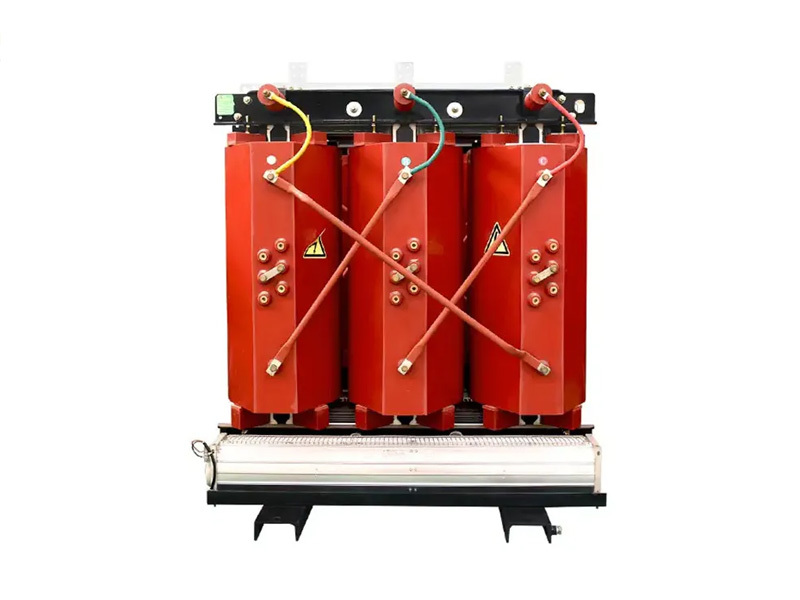He' Nan Chineng Electric Power Equipment Co., Ltd
Top Features of Oil-immersed Transformers That Enhance Performance
Jun 13,2025
Introduction to Oil-immersed Transformers
Oil-immersed transformers are pivotal components in electrical systems, particularly in the distribution and transmission of electrical energy. Distinct from dry-type transformers, oil-immersed transformers utilize oil as both a coolant and insulator. This unique design offers several advantages that significantly enhance their performance and longevity.
In this article, we will delve into the **top features of oil-immersed transformers** that not only improve their operational efficiency but also ensure reliability in demanding environments. Each feature plays a vital role in meeting the complex requirements of modern electrical systems.
Understanding Oil-immersed Transformers
Before exploring the individual features, it is essential to understand the basic principles and components of oil-immersed transformers.
What is an Oil-immersed Transformer?
An oil-immersed transformer is a type of electrical transformer that is submerged in insulating oil. This oil serves multiple purposes, including heat dissipation, insulation, and protection against environmental factors. Typically used in high-voltage applications, these transformers excel in facilitating the transmission of electrical power over long distances.
Key Components of Oil-immersed Transformers
1. **Core**: Made of laminated silicon steel, the core is essential for efficient magnetic flux transfer.
2. **Windings**: Usually composed of copper or aluminum, the windings allow for energy transformation between primary and secondary circuits.
3. **Insulating Oil**: Acts as an insulator and coolant, preventing overheating and electrical failures.
4. **Tank**: The outer casing that holds the oil and protects the internal components from environmental conditions.
Top Features Enhancing Performance
The performance of oil-immersed transformers is influenced by several factors, which we will explore in detail.
1. Excellent Cooling Efficiency
One of the most significant advantages of oil-immersed transformers is their **superior cooling capabilities**. The oil circulating within the transformer dissipates heat produced during operation, allowing the transformer to maintain optimal temperatures. This cooling efficiency contributes to:
- **Increased Load Capacity**: Transformers can handle higher loads without overheating.
- **Extended Lifespan**: By maintaining lower operating temperatures, the wear and tear on components are significantly reduced.
Heat Dissipation Mechanisms
The cooling process involves the following mechanisms:
- **Convection**: The oil circulates, transferring heat away from the windings and core.
- **Conduction**: Heat is conducted from the windings to the oil and then to the tank.
- **Radiation**: Heat is radiated from the tank to the surrounding environment.
2. High Insulation Strength
The insulating oil used in these transformers provides **exceptional electrical insulation**, which is vital for safe operation. This insulation strength is crucial for preventing electrical breakdowns and ensuring reliability.
- **High Dielectric Strength**: Oil typically has high dielectric strength, allowing it to withstand high voltages without breaking down.
- **Moisture Resistance**: Oil-immersed transformers are less susceptible to moisture ingress compared to dry-type transformers, further enhancing their insulation properties.
Importance of Insulation in Operational Safety
Effective insulation protects against short circuits and electrical failures, ensuring smooth operations in high-stakes environments, such as power generation and industrial applications.
3. Robust Structural Design
Oil-immersed transformers are designed to withstand environmental stressors, making them suitable for both indoor and outdoor applications.
- **Durability**: The tank is constructed from robust materials that resist corrosion and mechanical damage.
- **Sealed Construction**: Many transformers feature a sealed design that protects internal components from environmental contaminants.
Environmental Adaptability
With robust construction, oil-immersed transformers can operate in various conditions, including extreme temperatures and locations with high humidity or pollution levels.
4. Reduced Maintenance Requirements
Oil-immersed transformers typically require **lower maintenance** than their dry-type counterparts. The self-cooling mechanism and sealed design minimize the need for frequent inspections.
- **Longer Intervals Between Servicing**: Routine maintenance schedules can be extended due to the reliability and durability of these transformers.
- **Cost-Effectiveness**: Reduced maintenance translates to lower operational costs over time.
Maintenance Practices for Oil-immersed Transformers
While maintenance is minimal, essential practices include:
- **Regular Oil Testing**: Monitoring oil quality and dielectric strength to detect potential issues.
- **Thermal Imaging**: Identifying hot spots that may indicate failing components.
5. Versatile Application Range
Oil-immersed transformers can be tailored for various applications, making them extremely versatile.
- **Power Distribution**: Widely used in substations for efficient power distribution.
- **Industrial Applications**: Suitable for factories requiring high power for machinery.
- **Renewable Energy Systems**: Integral in connecting renewable energy sources, like wind and solar, to the grid.
Customization Options
Manufacturers offer a range of customization options, allowing for transformers to be designed according to specific operational requirements and environmental considerations.
6. Enhanced Environmental Protection
Modern oil-immersed transformers come equipped with features designed to protect against environmental hazards.
- **Conservator Tanks**: These tanks help manage oil expansion and contraction due to temperature changes, reducing risks of leaks.
- **Buchholz Relay**: A safety device that detects gas buildup or oil movement, indicating potential faults.
Future Trends in Environmental Protection
With growing concerns about environmental impact, manufacturers are researching biodegradable oils and more sustainable materials for transformer construction.
7. High Reliability and Performance Stability
Reliability is paramount in electrical systems, and oil-immersed transformers deliver consistent performance.
- **Load Variability Management**: They can handle fluctuating loads without compromising performance.
- **Long-term Operational Stability**: Their robust design and efficient cooling mechanisms ensure stable performance over extended periods.
Impact on Power Grid Stability
The reliability of oil-immersed transformers plays a critical role in maintaining power grid stability, ensuring that electricity supply meets demand without interruptions.
8. Cost Efficiency Over Time
While the initial investment for oil-immersed transformers may be higher compared to dry-type transformers, the long-term benefits often justify the cost.
- **Lower Operating Costs**: With reduced maintenance needs and enhanced efficiency, operational costs decrease significantly.
- **Longer Lifespan**: Their durability ensures that replacement costs are minimized over time.
Return on Investment Analysis
When evaluating the cost-effectiveness of oil-immersed transformers, it is essential to consider the total lifecycle cost, including installation, maintenance, and potential savings from their operational efficiency.
FAQs About Oil-immersed Transformers
What is the primary function of oil-immersed transformers?
Oil-immersed transformers are mainly used to step up or step down voltage levels in electrical systems while providing insulation and cooling through the oil.
How does the insulating oil affect the performance of the transformer?
The insulating oil enhances the transformer's cooling efficiency, electrical insulation strength, and overall reliability, allowing it to operate effectively in high-voltage applications.
What are the maintenance requirements for oil-immersed transformers?
Routine maintenance includes oil testing for quality, thermal imaging for hot spots, and inspections of sealing and structural integrity to ensure optimal performance.
Can oil-immersed transformers be used in renewable energy applications?
Yes, oil-immersed transformers are commonly used in renewable energy systems to connect sources like wind and solar power to the electrical grid.
What are the environmental concerns associated with oil-immersed transformers?
Environmental concerns primarily revolve around the potential for oil spills and leaks. However, advancements in design and biodegradable oils are addressing these issues.
Conclusion
Oil-immersed transformers are crucial in modern electrical systems, providing reliability, efficiency, and versatility. Their unique features, including excellent cooling capabilities, high insulation strength, and robust structural design, contribute significantly to their enhanced performance. As technology evolves, the focus on sustainability and environmental protection will likely lead to further innovations in the design and materials used in oil-immersed transformers.
Understanding these top features not only highlights the importance of oil-immersed transformers in power systems but also underscores their role in sustaining efficient and reliable electricity distribution in an increasingly energy-dependent world.










